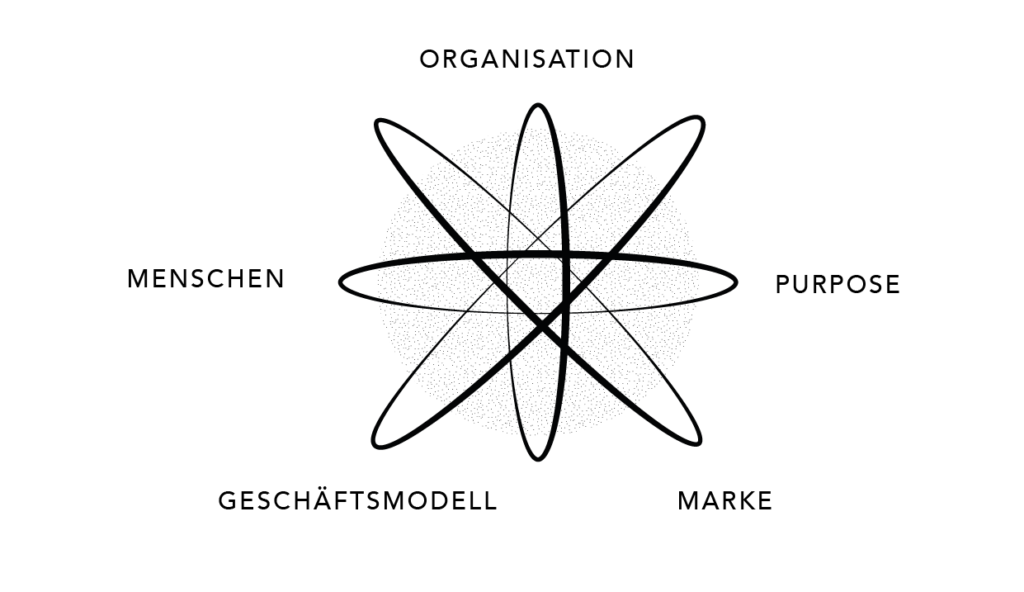For what?
In order to answer complex questions relating to sustainability, it is important to communicate at eye level - between suppliers and customers as well as between management and employees. The background to this is: As a rule, those involved do not yet have a solution in their pocket - the aim is to approach a "sustainable" solution through mutual exchange. The cocreation method is based on the assumption that companies and customers enter into an equal partnership for the duration of the exchange: Customers are no longer consumers of a product, but become "active collaborators". The sustainability canvas serves as the basis for a co-creative conversation between partners.
Example
We developed this version of the sustainability canvas to train sales teams on the topic of sustainability. Customer advisors, for example at banks and financial service providers, use the canvas to engage in co-creative discussions with customers in order to develop a new solution for a specific sustainability problem of the customer based on the structure of the canvas.
What matters
The following factors are important for successful cooperation with customers on an equal footing:
- Find out in advance, for example via a stakeholder interview or the method of appreciative inquiry, where your customers stand on the topic of sustainability, what experience they have already gained and what current issues they are dealing with.
- Before the meeting, develop a specific task or question together that you would like to answer using the canvas.
- Moderate the conversation with the customer - and concentrate on listening. Allow your conversation partner to do a lot of the talking.
- Fill in the canvas during the conversation - for example on the virtual whiteboard or by hand in a face-to-face meeting.
Step by step
Step 1
Go through the canvas with your conversation partners in the order of the numbered boxes.
- People: What is the individual purpose that drives the person you are talking to? This is about your counterpart's inner self, not their role as a customer.
- Sustainability: Why are you interested in sustainability? Also share your organization's contribution to this topic.
- Society: What relevant developments are you aware of in areas such as politics, health or culture?
- Economy: Which economic and legal conditions are relevant?
- Market: What are your customer's needs?
- Organization: How does your client's business model work? What role does sustainability play in it?
- Process: What processes are used to create your customer's products and solutions? Where is there leverage to improve sustainability?
- Product: Which of your products and solutions have the potential to have a positive impact on the customer's described tensions regarding sustainability? Always return to the customer's business model during the conversation.
Step 2
Conclude the conversation with the development of concrete next steps.
steps:
- What is the situation today?
- What is the future potential?
- What target state would you like to achieve in the next six weeks?
- What steps will you be taking in the next few days?
Step 3: Thank your contact person for their time and provide them with the completed canvas after the interview.
Framework
Duration: 60 - 90 minutes
Format: virtual via video conference or in person in a suitable room.
room
Participants: Sales contacts and customers; entire teams for internal use
You can find more information on this and other tools for overcoming business challenges with communicative means in the book





